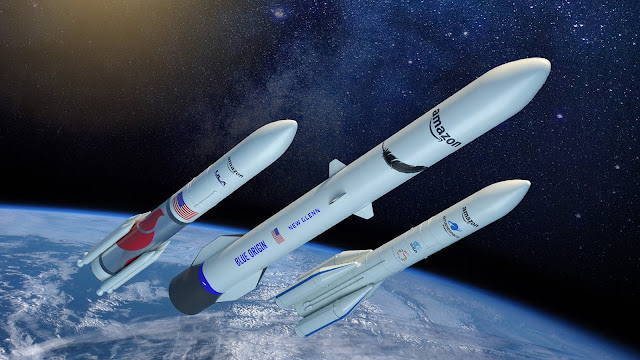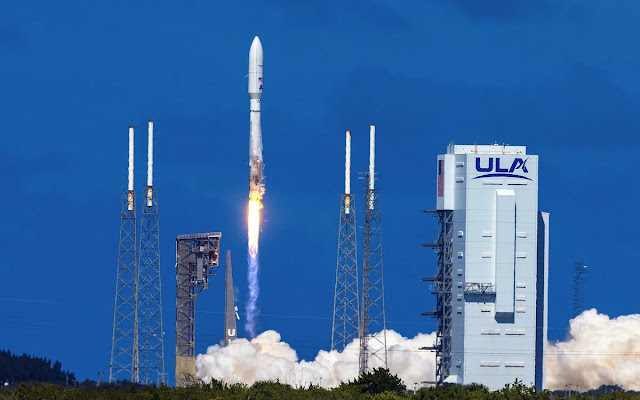Amazon’s Project Kuiper: A $20 Billion Leap into Satellite Internet to Challenge SpaceX’s Starlink
Amazon, Project Kuiper, satellite internet, SpaceX, Starlink, broadband, technology, Jeff Bezos, Elon Musk, ULA, launch
April 10th, 2025
In the rapidly evolving realm of satellite internet, Amazon’s Project Kuiper emerges as a formidable contender, poised to challenge established players like SpaceX’s Starlink. With an ambitious $20 billion investment, Amazon aims to deploy a constellation of satellites to deliver high-speed, low-latency broadband globally. This initiative not only underscores Amazon’s commitment to technological innovation but also highlights the intensifying competition in the satellite internet sector.
The Inception of Project Kuiper
Announced in 2019, Project Kuiper is Amazon’s ambitious plan to launch a network of over 3,000 satellites into low Earth orbit (LEO). The primary objective is to provide broadband internet access to underserved and remote regions worldwide. This initiative reflects Amazon’s vision of bridging the digital divide and expanding its footprint in the global telecommunications landscape.
The $20 Billion Investment: Strategic Implications
Amazon’s substantial $20 billion investment in Project Kuiper signifies a strategic move to diversify its portfolio and tap into the burgeoning satellite internet market. This financial commitment encompasses satellite manufacturing, launch services, ground infrastructure, and operational costs. By allocating such resources, Amazon aims to establish a robust infrastructure capable of delivering reliable internet services globally.
 |
| Amazon makes historic 20 Billion dollars, launch investment to advance Project Kuiper. Project Kuiper gets ready for future satellite deployments by signing new long-term launch commitments. - Amazon |
Competitive Landscape: Project Kuiper vs. SpaceX’s Starlink
The satellite internet arena is becoming increasingly competitive, with SpaceX’s Starlink currently leading the pack. Starlink has already deployed thousands of satellites and offers services to numerous customers worldwide. However, Amazon’s entry with Project Kuiper introduces a significant challenge to SpaceX’s dominance.
According to a report by CircleID, Amazon’s extensive resources and existing customer base provide it with a competitive edge. The report highlights that “Amazon’s Project Kuiper is far behind Starlink and is under time pressure, but Amazon has several things going for it.” These advantages include Amazon’s vast infrastructure, logistical capabilities, and a strong presence in the consumer market.
Technological Innovations and Infrastructure
Project Kuiper is not just about launching satellites; it involves developing advanced technologies to ensure efficient and reliable service. Amazon is focusing on creating customer terminals that are affordable and easy to install, aiming to make the service accessible to a broad user base. Additionally, the company is investing in ground stations and other infrastructure to support the satellite network.
An article by TechRadar explains that Amazon plans to offer different types of customer terminals, including a standard model for residential customers and a compact, portable version for users on the go. This approach demonstrates Amazon’s commitment to catering to diverse user needs and scenarios.
Regulatory Approvals and Partnerships
To operate a global satellite internet service, securing regulatory approvals is crucial. Amazon has been actively engaging with regulatory bodies worldwide to obtain the necessary licenses and spectrum allocations. For instance, the company has sought permissions from the UK’s Ofcom to operate its satellite broadband services in the region.
Moreover, Amazon is collaborating with various partners to facilitate the deployment and operation of Project Kuiper. The company has invested in facilities at the Kennedy Space Center for satellite processing and has contracted multiple launch providers, including United Launch Alliance (ULA), to carry its satellites into orbit.
Challenges and Future Prospects
Despite its ambitious plans, Project Kuiper faces several challenges. The satellite internet market is capital-intensive and technologically demanding. Amazon needs to ensure the reliability and performance of its satellite network to compete effectively with established players like Starlink. Additionally, the company must navigate complex regulatory environments and address concerns related to space debris and orbital congestion.
However, Amazon’s extensive experience in logistics, technology development, and customer service positions it well to overcome these challenges. The company’s long-term vision includes not only providing internet services but also integrating Project Kuiper with its existing ecosystem, potentially enhancing services like Amazon Web Services (AWS) and expanding its reach in the digital economy.
 |
Amazon Launches First Project Kuiper Satellites to Orbit- Amazon |
Conclusion
Amazon’s Project Kuiper represents a significant investment in the future of global connectivity. By committing $20 billion to this endeavor, Amazon is not only diversifying its business operations but also contributing to bridging the digital divide. As the project progresses, it will be interesting to observe how it reshapes the satellite internet landscape and influences the dynamics of global broadband services.
The competition between Project Kuiper and SpaceX’s Starlink is indicative of the broader race to dominate the satellite internet market. For consumers, this rivalry promises advancements in technology, improved services, and potentially more affordable options for high-speed internet access worldwide.
This article contains paid affiliate links, which means we may earn a commission if you make a purchase through these links—at no extra cost to you. Your support helps us create valuable content. Check out our recommended tools and resources on our LinkTree shop.





Comments
Post a Comment